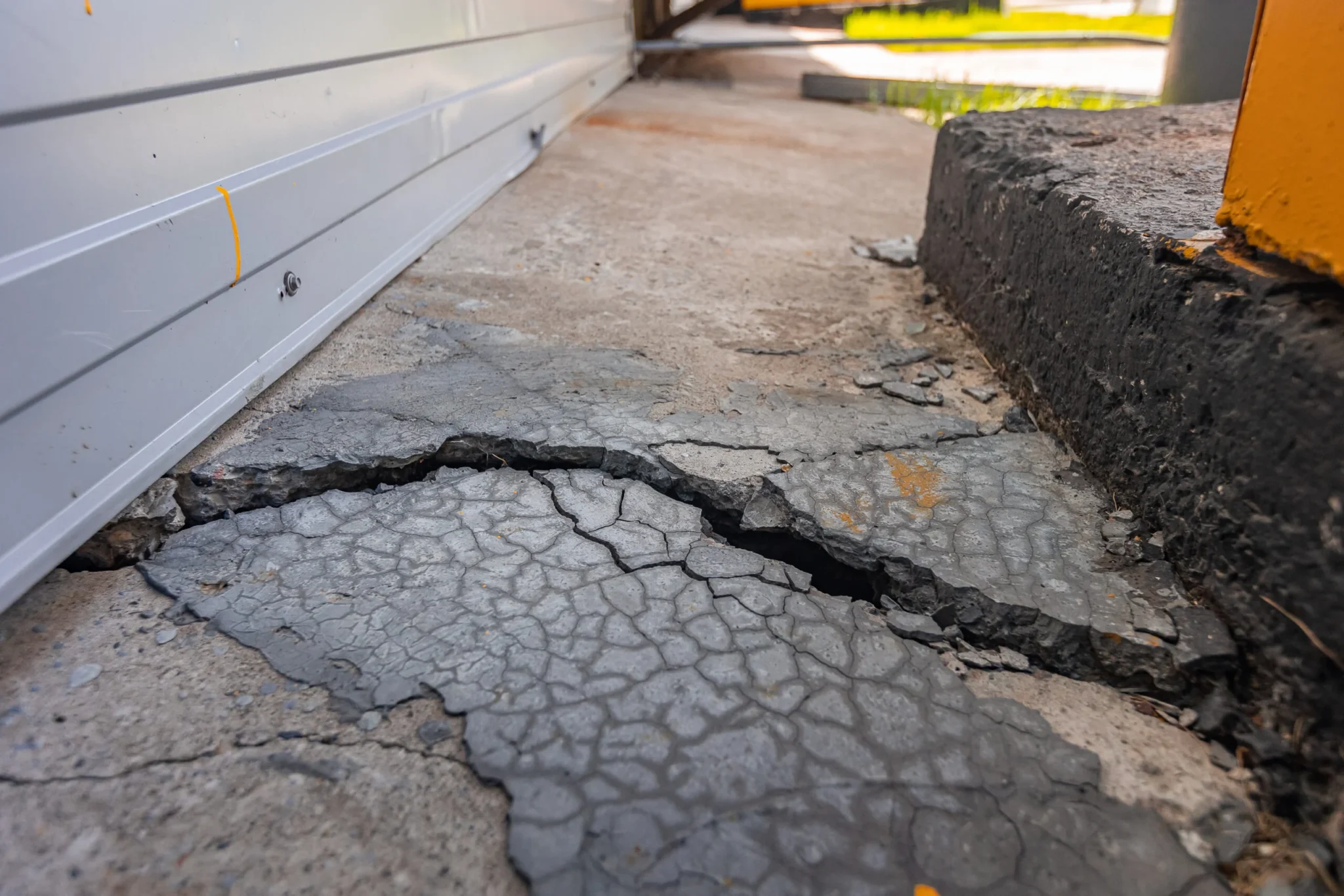
If your property has been impacted by seismic activity, it is crucial to address foundation cracks promptly to safeguard the structural integrity of your building. These cracks can indicate significant issues and result in water infiltration, mold growth, and even structural instability if overlooked. By repairing them promptly, you can prevent further damage and guarantee a safe environment. Various repair methods, such as epoxy injections, carbon fiber strips, and underpinning, can effectively restore your foundation’s stability. Remember, timely action is essential for mitigating risks and keeping your property secure.
Key Takeaways
- Assess foundation for post-seismic cracks promptly.
- Use epoxy injections for minor cracks.
- Consider carbon fiber strips for added reinforcement.
- Consult a structural engineer for comprehensive evaluation.
- Address cracks promptly to prevent further damage.
Understanding Foundation Cracks
To grasp the significance of foundation cracks, consider their role as indicators of structural integrity. These cracks aren’t just superficial blemishes on your home; they can be early warning signs of potentially serious issues. When you notice cracks forming in your foundation, it’s essential to address them promptly to prevent further damage.
Foundation cracks can result from various factors, including seismic activity, soil settlement, or poor construction practices. By understanding the underlying causes of these cracks, you can better assess the extent of the damage and determine the most effective repair solutions. Ignoring foundation cracks can lead to more significant problems down the line, such as water infiltration, mold growth, and even structural instability.
One key aspect of understanding foundation cracks is identifying their types and patterns. Different types of cracks can indicate different issues with your foundation. For example, horizontal cracks are often a sign of excessive lateral pressure, while vertical cracks may signal foundation settlement. By examining the size, shape, and location of the cracks, you can gather valuable information about the underlying cause and severity of the damage.
Types of Cracks to Identify
Identifying various types of cracks in your foundation is essential for understanding the underlying structural issues. There are several common types of cracks that may appear in your foundation after seismic activity. One of the most typical types is vertical cracks, which often indicate normal settling of the foundation. These cracks usually run straight up and down, starting from the top of the wall and traveling towards the bottom.
Another type to look out for is horizontal cracks. These cracks are more serious and can signify excessive lateral pressure on the foundation walls. Horizontal cracks are often caused by soil pressure against the foundation and may require immediate attention to prevent further damage.
Additionally, diagonal cracks are another common occurrence in foundations post-seismic activity. These cracks typically appear at a 45-degree angle and can be a sign of structural distress. Diagonal cracks may indicate foundation movement and could potentially lead to wall collapse if not addressed promptly.
Lastly, stair-step cracks are another type to be aware of. These cracks resemble a flight of stairs and usually occur in brick or concrete block walls. Stair-step cracks can be a result of the foundation settling unevenly or due to soil expansion and contraction.
Risks Associated With Cracks
Understanding the risks associated with foundation cracks is essential for evaluating the structural integrity of your building post-seismic activity. Cracks in the foundation can pose various dangers that shouldn’t be overlooked. One significant risk is water infiltration. When cracks form in the foundation, water can seep into the building, leading to moisture issues like mold growth and weakening of the structure‘s stability. Additionally, if left unrepaired, these cracks can widen over time, potentially causing structural failure during future seismic events.
Another risk linked to foundation cracks is pest intrusion. Gaps in the foundation provide pests such as termites and rodents easy access to the building. These pests can cause extensive damage to the structure and compromise its safety. Furthermore, foundation cracks can affect the insulation of the building, resulting in energy loss and increased utility costs. The cracks create pathways for conditioned air to escape and outdoor air to enter, making it harder to regulate indoor temperatures efficiently.
Furthermore, foundation cracks can decrease the overall property value. Potential buyers may be deterred by visible structural issues, impacting the resale potential of the building. To mitigate these risks, it’s important to address foundation cracks promptly and effectively. Regular inspections and timely repairs can help safeguard your building against these potential hazards.
Importance of Prompt Repairs
Don’t delay addressing foundation cracks, as immediate repairs are vital to safeguarding your building against potential risks like water infiltration and pest intrusion. When it comes to the structural integrity of your building, taking prompt action can make a significant difference in preventing further damage. Here’s why timely repairs are essential:
- Preventing Water Damage: Foundation cracks can allow water to seep into your building, leading to moisture issues, mold growth, and even weakening the foundation over time. By addressing cracks promptly, you can mitigate the risk of water damage and maintain a dry and healthy indoor environment.
- Avoiding Pest Infestation: Small cracks in the foundation can create entry points for pests like termites, ants, and rodents. These unwanted intruders can cause extensive damage to your building’s structure and pose health risks to occupants. Timely repairs help seal off these entryways, keeping pests out and preserving the integrity of your property.
- Maintaining Property Value: Ignoring foundation cracks can decrease the value of your building and make it less attractive to potential buyers or tenants. By promptly repairing any damage, you not only protect your investment but also guarantee that your property retains its market value in the long run.
Repair Methods Overview
To effectively address foundation cracks after seismic activity, various repair methods are available to suit different types and severities of damage. One common method is epoxy injection, which involves filling the cracks with epoxy that hardens to create a strong bond and prevent further water intrusion. This technique is effective for repairing hairline cracks and minor damage.
Another approach is the use of carbon fiber strips or steel reinforcements to provide additional support to the foundation. These materials are applied to the cracked areas to enhance the structural integrity of the foundation.
For more severe damage, underpinning may be necessary. This process involves extending the foundation depth or adding new supports to stabilize the structure. Underpinning is a complex repair method that should be carried out by experienced professionals.
Slabjacking is another technique used to lift and level sunken or uneven concrete slabs. It involves pumping a grout mixture underneath the slab to raise it back to its original position.
In cases where the foundation damage is extensive, a complete foundation replacement may be the most effective solution. This involves demolishing the existing foundation and constructing a new one. It’s a costly and time-consuming process but guarantees the long-term stability of the structure. When selecting a repair method, consider the extent of the damage, budget constraints, and consult with a professional to determine the most suitable approach for your specific situation.
DIY Vs. Professional Repairs
Consider the complexity of the foundation damage and your skill level before deciding between tackling repairs yourself or hiring a professional. It’s important to weigh the pros and cons of each option to guarantee the best outcome for your home’s foundation.
- DIY Repairs:
- Cost-effective option as you won’t have to pay for labor.
- Suitable for minor cracks that are shallow and easy to access.
- Requires time, effort, and the right tools to make sure the repair is done correctly.
- Professional Repairs:
- Expertise and experience in dealing with various types of foundation damage.
- Faster turnaround time, ensuring the repairs are done efficiently.
- Higher cost due to labor and professional equipment, but guarantees quality and long-lasting results.
When deciding between the two options, consider factors such as the extent of the damage, your comfort level with DIY projects, and the importance of a timely and effective repair. Remember that foundation issues are vital to address promptly to prevent further structural damage to your home. Choose the option that aligns best with your capabilities and the severity of the foundation cracks to guarantee a successful repair process.
Preventative Measures for Future
Taking proactive steps can help safeguard your home’s foundation against future damage. After experiencing seismic activity, it’s important to implement preventative measures to minimize the risk of further harm. One key strategy is to guarantee proper drainage around your home. Poor drainage can lead to water accumulation around the foundation, causing soil erosion and potential shifts that may worsen existing cracks. By maintaining gutters, downspouts, and grading, you can redirect water away from the foundation, reducing the likelihood of future damage.
Another preventive measure is to reinforce vulnerable areas of your foundation. This can be achieved through the installation of steel braces or anchors to strengthen weak spots. Additionally, applying epoxy injections to existing cracks can help prevent them from expanding during future seismic events. Regular inspections are also essential in identifying early signs of foundation issues. By monitoring for cracks, shifts, or moisture intrusion, you can address potential problems before they escalate.
Furthermore, landscaping plays an important role in foundation protection. Trees with invasive root systems should be planted a safe distance away from the home to prevent root damage. Shrubs and bushes near the foundation should be well-maintained to avoid excessive moisture retention. By proactively addressing these aspects, you can fortify your foundation against potential damage, ensuring the long-term stability and safety of your home.
Ensuring Structural Stability
After implementing preventative measures to safeguard your home’s foundation against future damage, the next step is ensuring its structural stability. This is vital to maintain the integrity of your home and prevent any potential risks or hazards. Here are three essential steps to help you guarantee the structural stability of your foundation:
- Foundation Inspection: Conduct a thorough examination of your foundation to identify any existing cracks, weaknesses, or areas of concern. Look for signs of damage such as uneven floors, sticking doors or windows, or visible cracks in the walls. Addressing these issues promptly can prevent further damage and secure the stability of your foundation.
- Reinforcement Techniques: Consider strengthening your foundation using techniques such as carbon fiber strips, steel braces, or concrete underpinning. These methods can help fortify weak areas and provide additional support to prevent future cracking or shifting, especially in high-risk seismic zones.
- Professional Consultation: Consult with a structural engineer or foundation specialist to assess the stability of your foundation and recommend the most suitable repair and reinforcement solutions. Their expertise can help you make informed decisions and secure that your foundation is structurally sound for years to come.
Frequently Asked Questions
Can Foundation Cracks Be Prevented Entirely, or Are They Inevitable After Seismic Activity?
You can take precautions, but foundation cracks may still occur after seismic activity. Monitoring for signs of damage, reinforcing weak areas, and seeking professional assessment post-quake are crucial steps to minimize potential cracks.
Are There Any Long-Term Effects on the Structural Integrity of a Building if Foundation Cracks Are Left Unrepaired?
If foundation cracks are left unrepaired, the structural integrity of a building may be compromised over time. Water infiltration, shifting of the foundation, and further damage can occur, leading to potential safety hazards.
How Do Seismic Activity and Foundation Cracks Impact the Resale Value of a Property?
When seismic activity causes foundation cracks, addressing these concerns promptly can have a major impact on the resale value of a property. Buyers may be wary of potential structural issues, leading to lower offers and longer listing times. It is crucial to address these concerns promptly.
Are There Any Insurance Policies That Cover the Cost of Repairing Foundation Cracks Caused by Seismic Activity?
Insurance policies typically cover various damages to your property. Some policies might include coverage for specific incidents like seismic activity. It’s wise to review your policy details to understand the extent of your coverage.
Is There a Specific Timeframe Within Which Foundation Cracks Should Be Repaired to Prevent Further Damage to the Building?
To prevent further damage to the building, it’s essential to repair foundation cracks promptly. Waiting can lead to structural issues. Act swiftly and consult professionals for guidance on the necessary timeframe and repair procedures.
Conclusion
Lifetime Basement Waterproofing has been North Georgia’s premier basement waterproofing company for over 50 years. As a family-owned and operated business, we specialize in basement waterproofing in Woodstock and surrounding areas and offer a range of expert services.
Our expertise includes crawlspace encapsulation, exterior foundation waterproofing, foundation crack repair, and designing drainage strategies such as French drains.
When it comes to addressing foundation cracks promptly after seismic activity, you can rely on Lifetime Basement Waterproofing for all your wet basement repair needs.
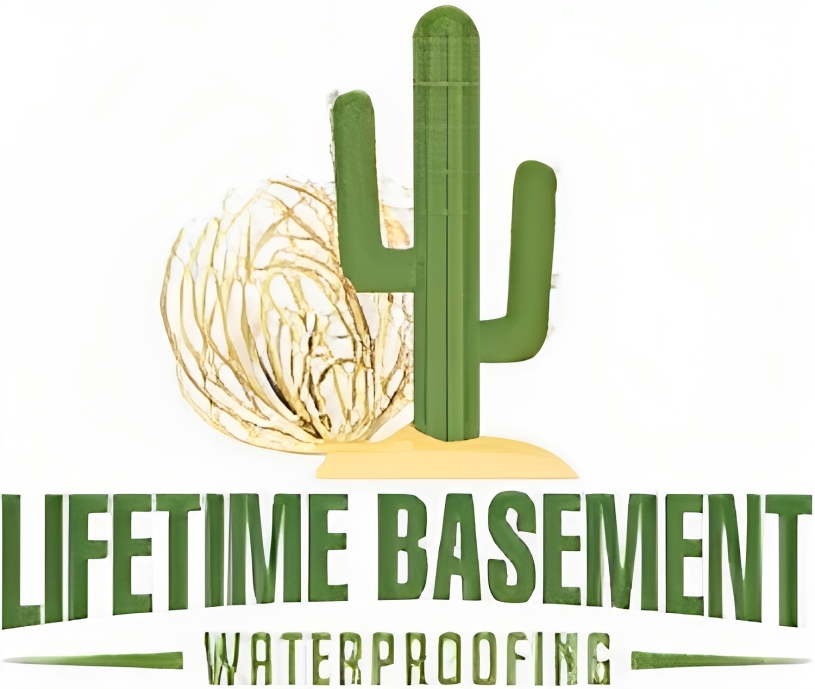

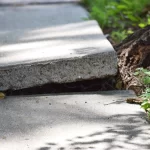
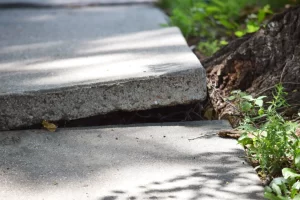
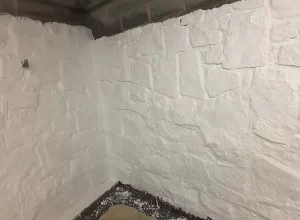
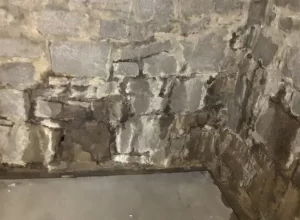
No comment yet, add your voice below!